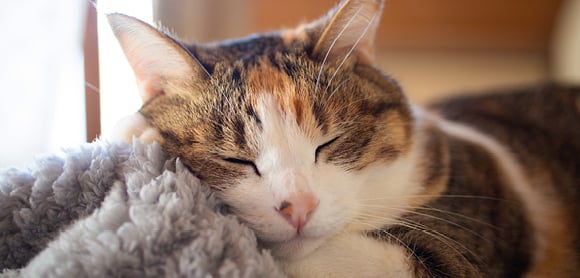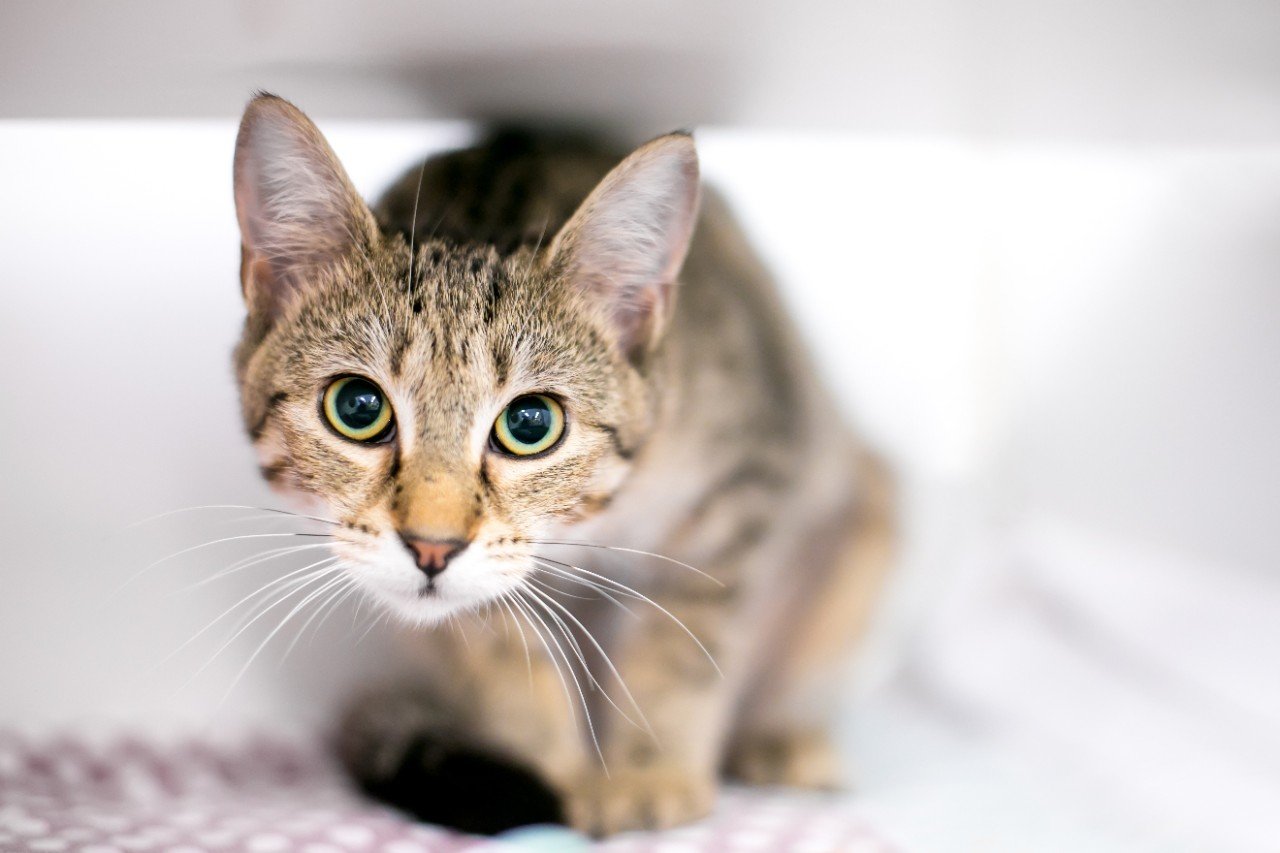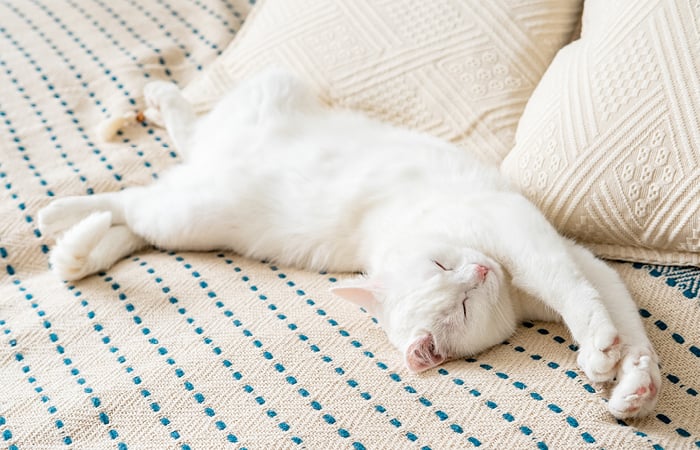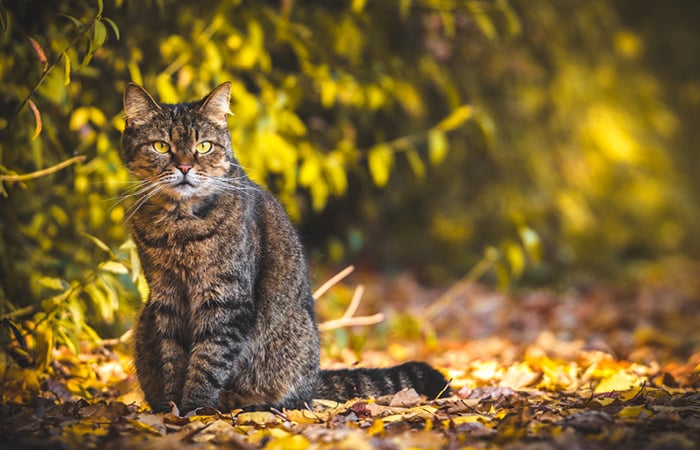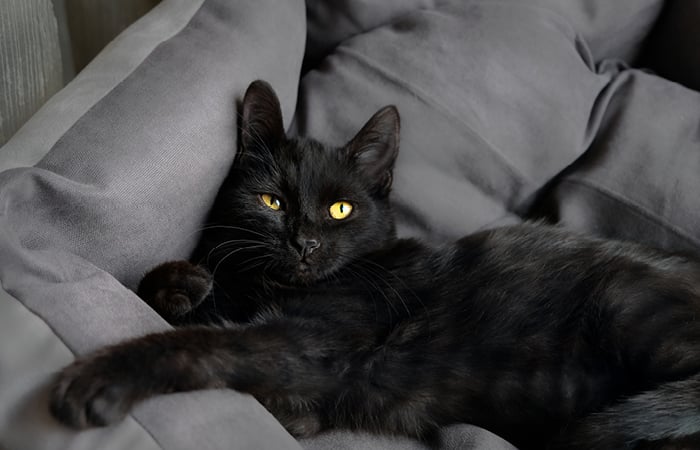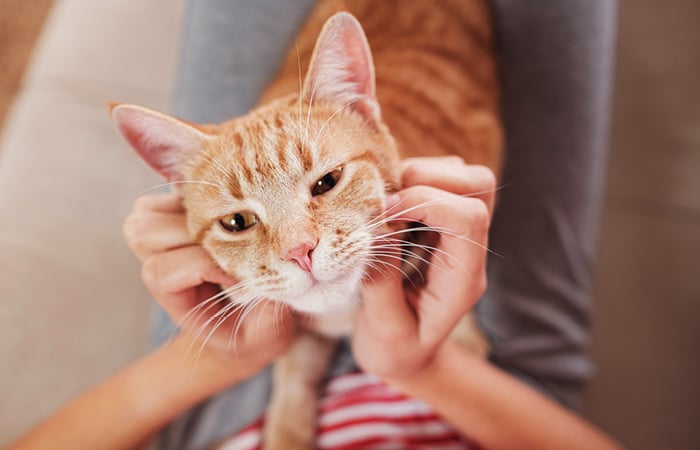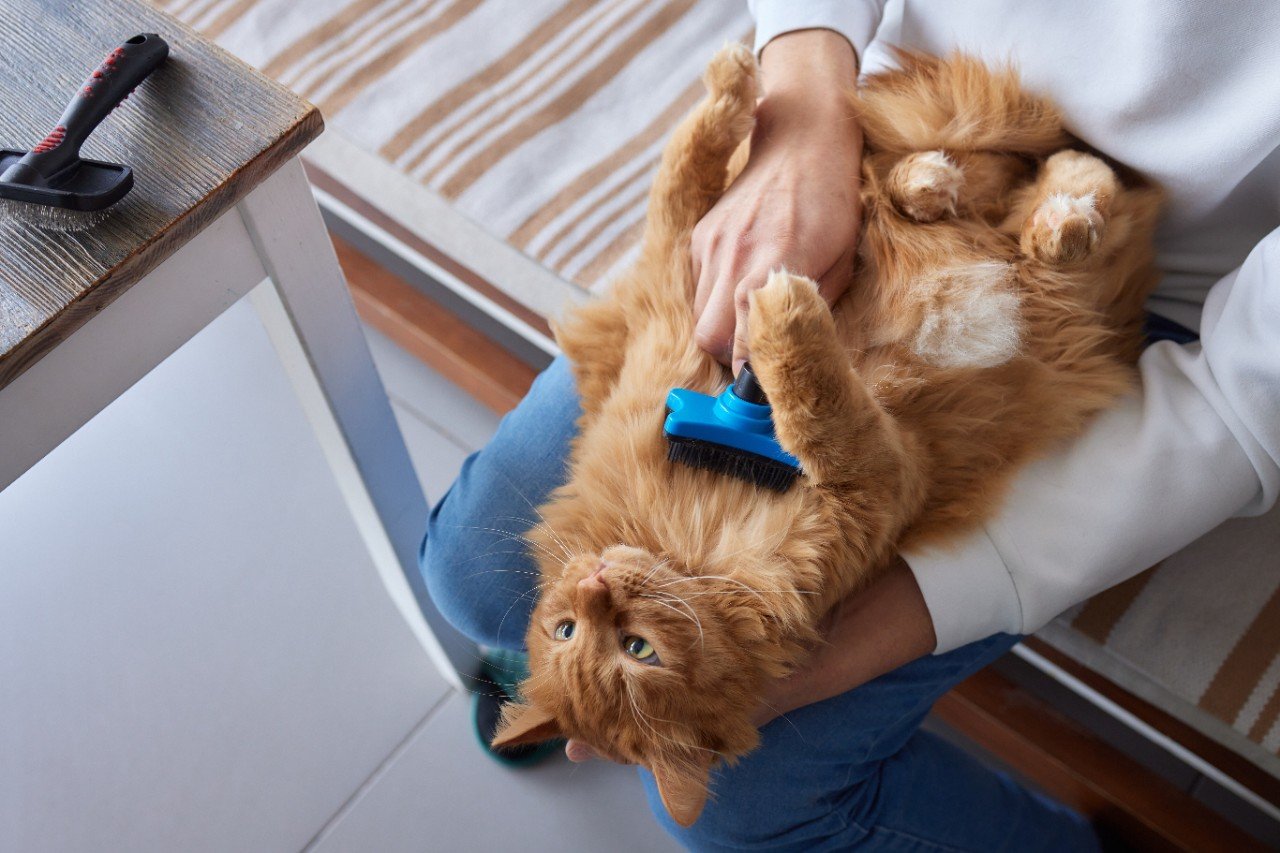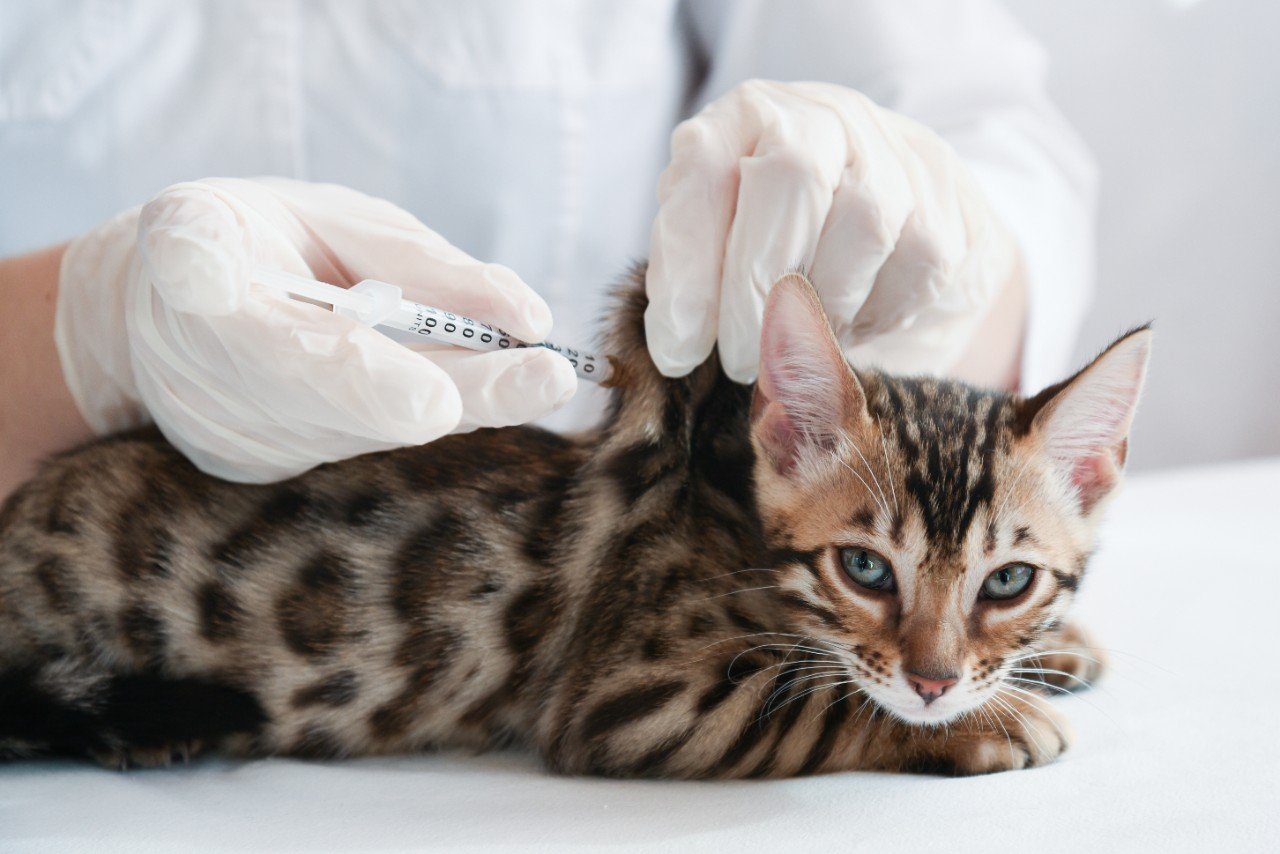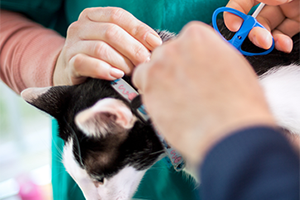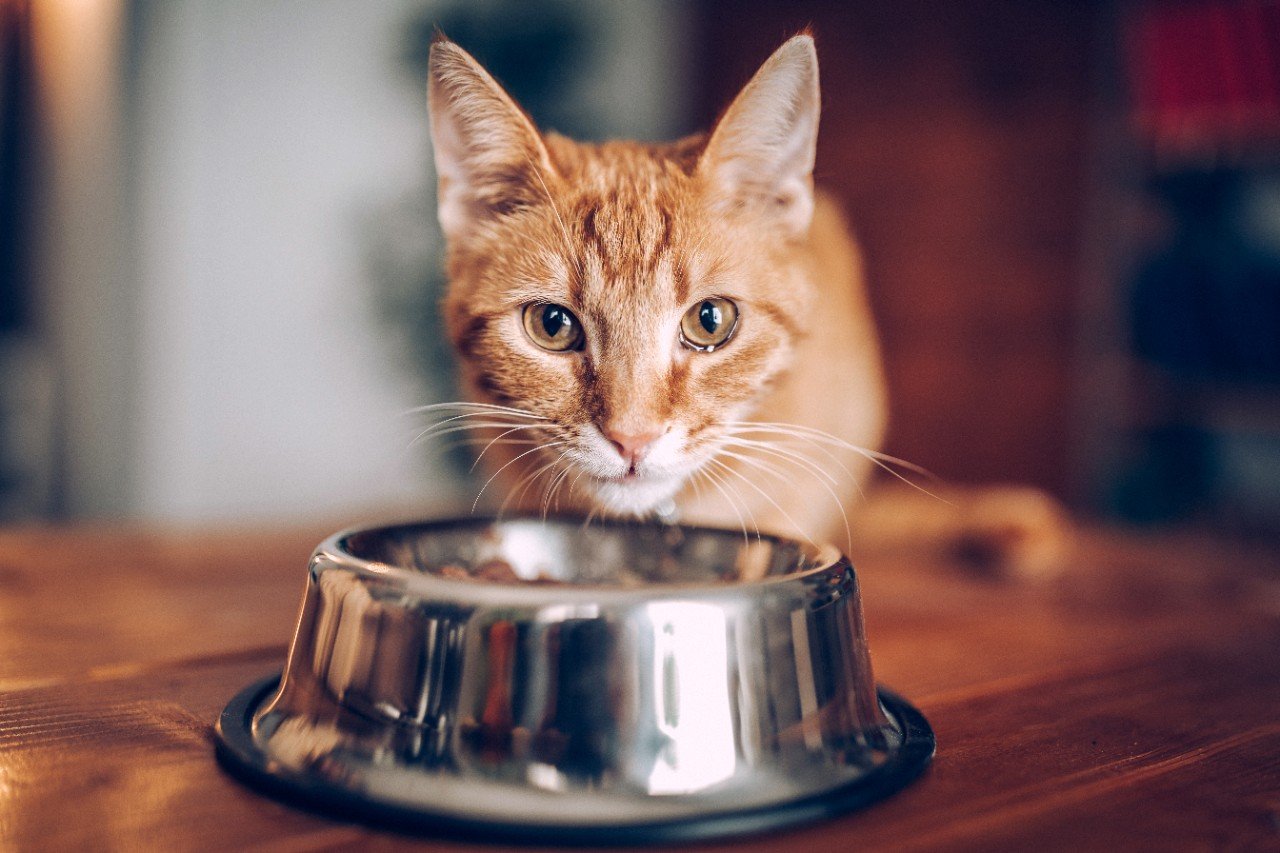
Russian Blue

An intelligent, sophisticated breed with plenty of affection to spare!
Vital stats
Swipe to view more
| Size: | Small to medium |
| Coat: | Short-haired |
| Life span: | 14 – 16 years |
| Temperament: | Loyal, shy, affectionate, playful |
Russian Blue personality & temperament

- Welcoming your new cat into your home is an exciting time. Russian Blue cats can be cautious when meeting unfamiliar people, so introductions should always be done at their pace. Once you have gained their trust, a Russian Blue cat is extremely loving, and they want as much attention as you can give.
- Due to their shyness, your Russian Blue may tend to hide away when there are visitors or parties in your home. They feel more comfortable in a quiet, peaceful spot where they’ll be left alone, so make sure they have access to choices: high and low, safe secure places to hide away.
- Russian Blue cats are one of the most loyal breeds of cat you can own, and they often attach to one person in particular. However, this friendly breed will still expect love and affection from everyone in the home!
- Generally, Russian Blue cats’ temperament is good-natured and undemanding as long as they’re near their human. Be warned however, they are known to be chatty and communicative, and they can be very vocal if their needs aren’t being met.
- This breed makes for a wonderful family pet, but you do need to consider if your home is right for them. They need a peaceful home, with regular routines. Young children or boisterous pets might be stressful for a Russian Blue cat.
- When your cat becomes familiar with you, they are a superb balance of social and loving. They don't mind too much if you're away at work for a little while – especially if they have plenty of interesting toys to entertain them. But when you return home, you’ll find them waiting to greet you by the door and ready for lots of love, affection, and play.
Russian Blue food & diet

As with all cats, Russian Blue cat food should be a complete diet, balanced for their correct life stage. There are, however, a few extra considerations for this slender breed.
- Russian Blue cats can be very chatty and vocal with their owner which can interpreted as hunger or requesting food. If you know your cat is well fed, and you are feeding them the recommended amount on the food packaging, resist the temptation to feed them more.
- Be aware that Russian Blue cats are prone to obesity and tend to have big appetites. Make sure you give them healthy treats, lean meats, and the recommended amount set out on the food packaging.
- This breed typically has a small frame means they can be seen as underweight when in fact they’re perfectly healthy. If you’re ever concerned by their size or appetite, make sure you discuss this with your vet.
Russian Blue grooming & coat care

Something special about Russian Blue cats’ coats is that each hair is silver-tipped. These reflective ends give them a shimmering sheen and adds to their ‘smoky’ appearance.
- If you have a Russian Blue kitten, you may notice they have stripes. These are called ‘ghost stripes’ and they disappear as they mature.
- They are mostly able to take care of their own fur and do not need a lot of support with grooming, as their short hair doesn’t shed much. They do however, have a double coat which would benefit from weekly grooming sessions to manage shedding as the seasons change, and to increase bonding with your pet. Start grooming early, in order to desensitise them to being brushed.
- Monitor the health of your Russian Blue cat by checking the condition of their coat. A greasy residue on their fur could suggest they’re not managing their own grooming, or their nutrition is poor. If this happens, it is important to seek veterinary advice.
Russian Blue training & behaviour

You can easily train Russian Blue cats due to their intelligence and love of human interaction.
- Aside from training your cat to use a litter tray, training your Russian Blue to do tricks, using positive reinforcement techniques, is also a good idea. Clicker training is a great option and not only provides mental enrichment but also strengthens the bond between human and cat.
- Russian Blue cats need a lot of exercise and mental stimulation. So, they are usually happiest when they are near humans, especially the ones they are most closely bonded with.
- Always keep a range of interactive toys available for your cat, especially if you’re out of the house. Because of their energetic, muscular bodies they love to pounce and catch. If you can create play opportunities for them to use their hunting instinct, they’ll be extra satisfied.
- Russian Blue cats’ behaviour can be mischievous when they’re bored or unfulfilled. Try these fun games to play with your kitten to keep them amused and ensure toys are rotated regularly to keep things interesting.
- It’s a good idea to have cat trees with lots of climbable surfaces in your home, allowing your cat to exercise. Additionally, your they will love to explore outside, so providing a secure outside space or ‘catio’ will give them a chance to burn off some of their energy.
Common Russian Blue health conditions

What to know before you buy or rehome a Russian Blue cat

Russian Blue cats are loving, loyal and super smart, but there are few things to know before you bring one home.
- As with most pedigree cats, there are some conditions which Russian Blue cats are more prone to. These include obesity, diabetes and renal disease. As well as these, there are common illnesses which can affect all kittens. If you have any concerns about your pet’s health, going to the vet should be your first step.
- It’s a good idea to take out reliable cat insurance for your Russian Blue cat as soon as you bring them home.
- Before bringing your cat home, you should do as much research as you can, especially if you’ve never owned a cat before. The more prepared you are, the better your Russian Blue cat will settle in.
- The name ‘Russian Blue’ does not refer to the colour of their eyes! Russian Blue kittens are born with bright blue eyes, but their eyes change colour as they mature. At around four months old, their eyes change to pale yellow, then deeper yellow, and then later bright green when they’re adult.
Russian Blue frequently asked questions
Russian Blue insurance considerations
We always offer these things as standard:
Physiotherapy & pet therapies
Along with physiotherapy, which is covered within the Vet Bills benefit, we also cover Pet Therapies like herbal medicine, homeopathy and acupuncture. You can also claim for hydrotherapy, up to £500 per illness/injury in dogs and cats (no additional limit for rabbits).
Petplan is a trading name of Pet Plan Limited (Registered in England No. 1282939) and Allianz Insurance plc (Registered in England No. 84638), Registered office: 57 Ladymead, Guildford, Surrey GU1 1DB.
Pet Plan Limited is authorised and regulated by the Financial Conduct Authority. Financial Services Register No. 311969. Allianz Insurance plc is authorised by the Prudential Regulation Authority and regulated by the Financial Conduct Authority and the Prudential Regulation Authority. Financial Services Register No. 121849. Pet Plan Limited is a subsidiary of Allianz Insurance plc.

